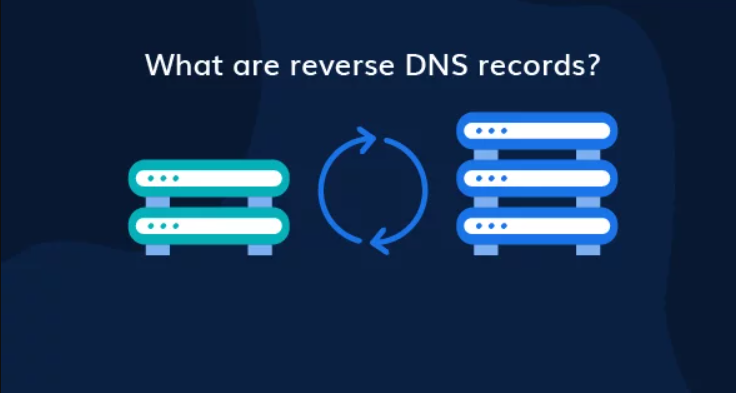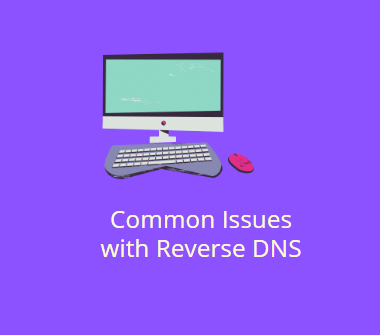
Reverse DNS (rDNS) is an essential yet often overlooked aspect of internet infrastructure. While most people are familiar with the concept of forward DNS, which translates domain names into IP addresses, reverse DNS performs the opposite function: it resolves an IP address back to its associated domain name. Understanding how reverse DNS works and why it matters is crucial for anyone involved in managing servers, email systems, or network security. This article explores the mechanics of reverse DNS, its importance, and how it impacts various aspects of internet operations.
Table of Contents
What is Reverse DNS?

Reverse DNS (rDNS) is a method of resolving an IP address back to its corresponding domain name. In contrast to the more common forward DNS lookup, where a domain name is converted into an IP address, reverse DNS queries an IP address and returns the associated domain name. This process is particularly useful for identifying the hostname associated with a specific IP address, making it a crucial tool in network management, security, and email deliverability.
Forward DNS vs. Reverse DNS

To fully grasp the concept of reverse DNS, it is essential to understand how it differs from forward DNS. In forward DNS, a domain name, such as example.com, is translated into an IP address like 192.0.2.1. This process allows users to access websites using human-readable names instead of numerical IP addresses. Reverse DNS, on the other hand, works in the opposite direction. It takes an IP address and resolves it to the corresponding domain name, such as 192.0.2.1 resolving to mail.example.com.
The reverse DNS lookup is performed using a special domain, .in-addr.arpa for IPv4 addresses and .ip6.arpa for IPv6 addresses. The IP address is reversed and appended to this domain to form a reverse DNS query. For example, the reverse DNS lookup for 192.0.2.1 would query the domain 1.2.0.192.in-addr.arpa.
How Reverse DNS Works
The process of reverse DNS lookup involves several steps and relies on the cooperation of various DNS servers. Here’s how it works:
- IP Address Reversal: The IP address to be looked up is first reversed. For example, the IP address
192.0.2.1is reversed to1.2.0.192. - Appended to Special Domain: The reversed IP address is then appended to the special domain
.in-addr.arpa(for IPv4) or.ip6.arpa(for IPv6). This forms the query domain, such as1.2.0.192.in-addr.arpa. - DNS Query: A DNS query is then sent to the DNS servers responsible for the
in-addr.arpaorip6.arpadomain. These servers handle reverse DNS lookups and return the associated domain name. - PTR Record: The DNS server that holds the reverse DNS information will respond with a PTR (Pointer) record. This PTR record contains the domain name associated with the queried IP address.
- Result: The result of the reverse DNS lookup is the domain name associated with the IP address. If no PTR record exists, the lookup will fail, indicating that no reverse DNS is configured for that IP address.
Why Reverse DNS Matters
Reverse DNS may seem like a technical detail, but it plays a significant role in various aspects of internet operations. Below are some of the key reasons why reverse DNS matters:
1. Email Deliverability

One of the most critical uses of reverse DNS is in email deliverability. Many mail servers use reverse DNS to verify the identity of incoming email. When an email server receives a message, it often checks the sending IP address’s reverse DNS to ensure it matches the domain claimed in the email headers. If the reverse DNS lookup fails or the PTR record does not match the sending domain, the email may be flagged as spam or rejected altogether.
Reverse DNS is a key component of email authentication protocols like SPF (Sender Policy Framework) and DMARC (Domain-based Message Authentication, Reporting & Conformance). Properly configured reverse DNS records can enhance email deliverability and reduce the likelihood of emails being marked as spam.
2. Network Security
Reverse DNS is also valuable for network security. By resolving an IP address to a domain name, network administrators can quickly identify the source of traffic or potential threats. For example, if an IP address is generating suspicious activity, a reverse DNS lookup can help identify the associated domain name, making it easier to determine whether the traffic is legitimate or malicious.
Additionally, reverse DNS is used in security logs and monitoring systems to provide human-readable information about IP addresses. Instead of seeing a raw IP address, network administrators can view the associated domain name, making it easier to analyze logs and detect patterns.
3. Troubleshooting and Diagnostics
Reverse DNS is a useful tool for troubleshooting network issues. When diagnosing connectivity problems, reverse DNS can help identify the source of the issue by resolving IP addresses to domain names. This is particularly useful in large networks where multiple IP addresses may be in use, and identifying the correct host is crucial.
For example, if a network administrator notices that a specific IP address is causing connectivity problems, a reverse DNS lookup can reveal the associated domain name, helping to pinpoint the device or service responsible for the issue.
4. Compliance and Best Practices
In some industries, reverse DNS is required for compliance with regulations or best practices. For example, many financial institutions and government agencies require reverse DNS to be configured for all external-facing IP addresses. This ensures that all network activity can be traced back to a specific domain name, enhancing accountability and security.
5. Enhanced User Experience
Reverse DNS can also improve the user experience by providing more meaningful information in logs, reports, and analytics. Instead of seeing numerical IP addresses, users and administrators can see domain names, making data easier to interpret and understand. This can be particularly useful in web analytics, where understanding the origin of traffic is crucial for optimizing websites and services.
Configuring Reverse DNS

Configuring reverse DNS involves setting up PTR records in the DNS system. These PTR records map an IP address to a domain name and are typically managed by the organization that owns the IP address block. Here’s how to configure reverse DNS:
- Determine the IP Address Block: Identify the IP address block for which you need to configure reverse DNS. This information is typically provided by your Internet Service Provider (ISP) or hosting provider.
- Create PTR Records: PTR records are created in the DNS zone associated with the IP address block. The exact process for creating PTR records varies depending on the DNS management tools you are using. For example, in a BIND DNS server, you would add a PTR record to the reverse zone file.
- Delegate Authority (if necessary): In some cases, the authority to manage reverse DNS for a specific IP address block may need to be delegated. This involves updating the DNS records to point to your DNS servers, allowing you to manage the PTR records for that block.
- Test the Configuration: After configuring reverse DNS, it is important to test the setup to ensure it is working correctly. You can use tools like
digornslookupto perform a reverse DNS lookup and verify that the correct domain name is returned. - Monitor and Maintain: Regularly monitor your reverse DNS configuration to ensure it remains accurate and up to date. As IP addresses and domain names change, you may need to update your PTR records to reflect these changes.
Common Issues with Reverse DNS

While reverse DNS is a straightforward concept, there are some common issues that can arise during its configuration and operation. Here are a few potential challenges:
1. Misconfigured PTR Records
One of the most common issues with reverse DNS is misconfigured PTR records. This can occur if the PTR record does not match the domain name associated with the IP address or if the record is missing altogether. Misconfigured PTR records can lead to failed reverse DNS lookups, resulting in email delivery issues or network security concerns.
2. Propagation Delays
Like all DNS changes, updates to PTR records can take time to propagate across the internet. This propagation delay can cause temporary inconsistencies in reverse DNS lookups, leading to failed queries or outdated information being returned.
3. Lack of Control Over Reverse DNS
In some cases, organizations may not have direct control over their reverse DNS configuration, particularly if their IP addresses are managed by an ISP or hosting provider. In such cases, reverse DNS changes may need to be requested through the provider, leading to delays and potential miscommunication.
4. IPv6 Reverse DNS Complexity
With the adoption of IPv6, reverse DNS configuration has become more complex. IPv6 addresses are significantly longer than IPv4 addresses, making the reverse DNS setup more prone to errors. Additionally, many organizations are still in the process of fully implementing IPv6, leading to inconsistencies in reverse DNS coverage.
Conclusion
Reverse DNS is a critical component of internet infrastructure that plays a vital role in email deliverability, network security, and troubleshooting. By understanding how reverse DNS works and why it matters, organizations can ensure that their systems are properly configured, leading to improved security, compliance, and user experience. While reverse DNS may seem like a technical detail, its impact on daily operations is significant, making it a key consideration for anyone involved in managing servers, networks, or email systems.
Properly configuring and maintaining reverse DNS records can help prevent common issues, enhance email deliverability, and provide valuable insights into network activity. Whether you are a seasoned sysadmin or a network administrator, reverse DNS is an essential tool in your arsenal, helping you navigate the complex world of internet operations with confidence.






